Art at the Seaside
 Choose a painting from the gallery for a closer look at how artists capture the many moods of the sea. Then set off on a virtual trip to the beach…and try your hand at coloring sheets or use a responsive sketchpad to add color to these works.
Choose a painting from the gallery for a closer look at how artists capture the many moods of the sea. Then set off on a virtual trip to the beach…and try your hand at coloring sheets or use a responsive sketchpad to add color to these works.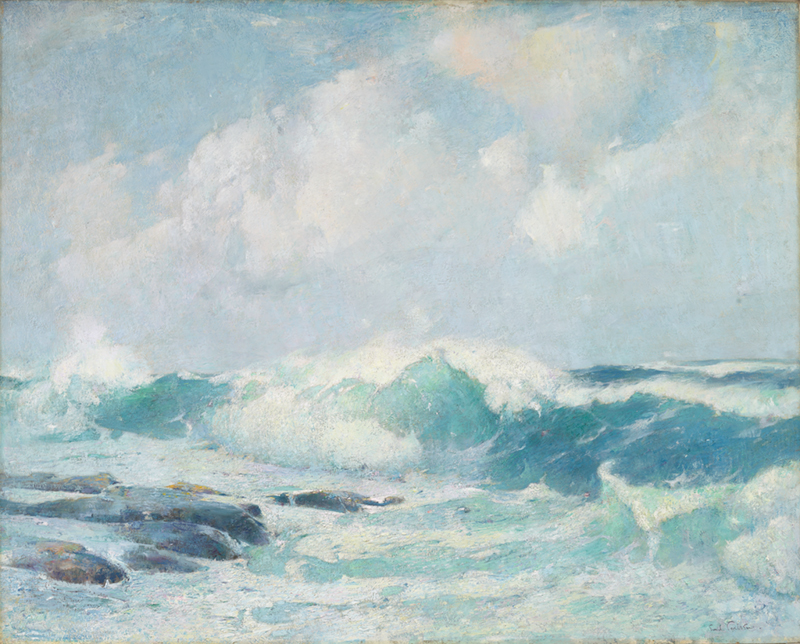
Surf Emil Carlsen
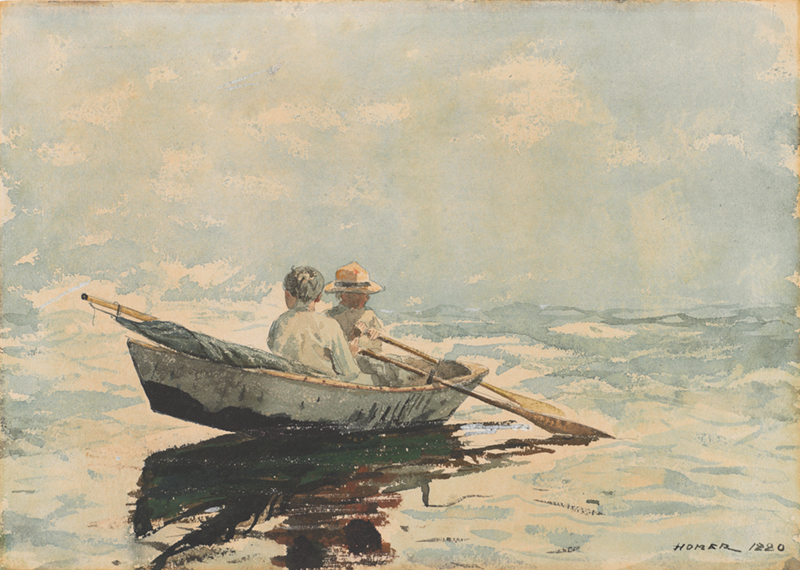
Rowboat Winslow Homer
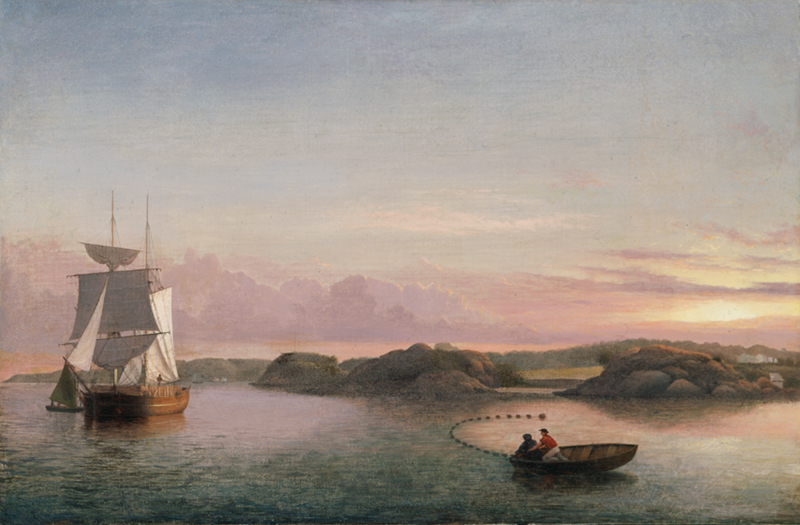
Gloucester Harbor Mary Blood Mellen
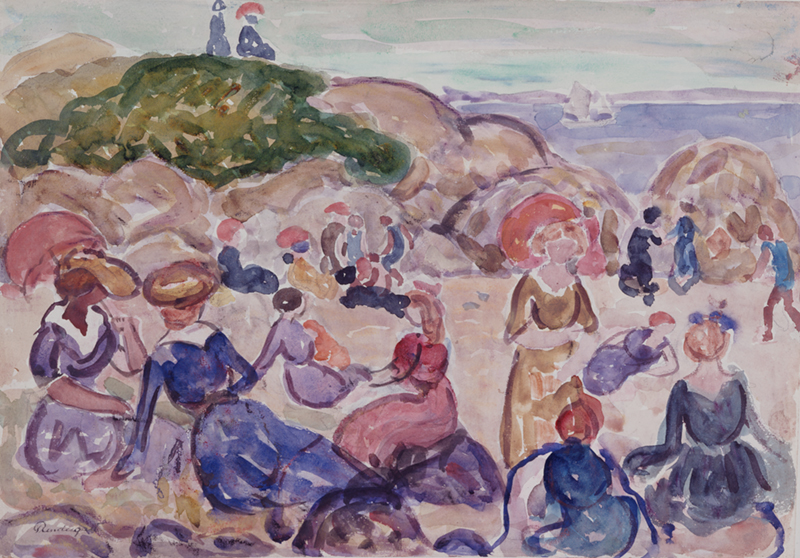
Beach Gathering M. Prendergast
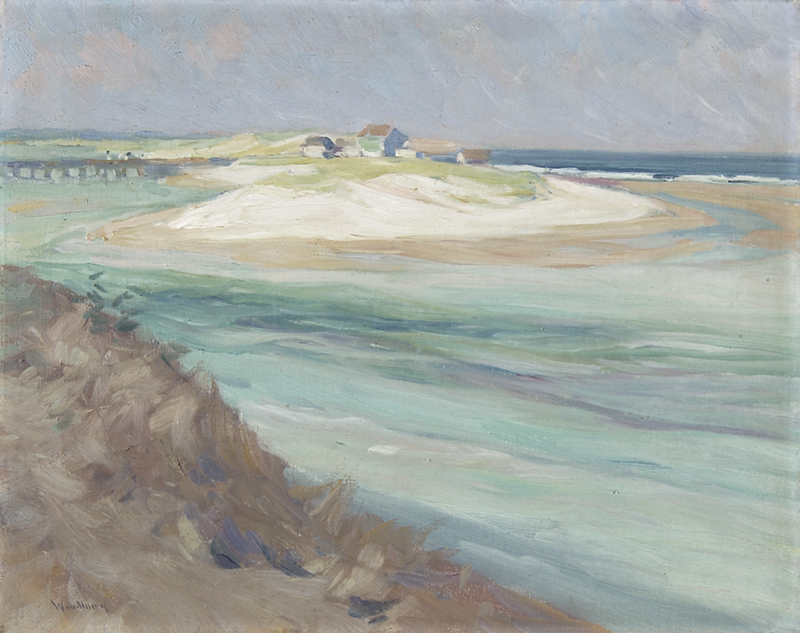
Ogunquit Beach C.H. Woodbury
Surf, ca. 1914 by Emil Carlsen
A view of the ocean or bay from the shore is a seascape. You can almost hear those waves crashing on the rocks, and feel the salty spray!
 Try coloring this work yourself!
Try coloring this work yourself!- Shades of blue predominate here. But look closely: see how the artist adds colors like purple, yellow, brown, and black to the surf scene.
- What colors add to the solidity of rocks? the curl of waves? the wind rippling across the water? the unsettled sky?
- Emil Carlsen painted this large (40” X 50”) seascape around 1914, using oil paints on canvas.
Rowboat, 1880 by Winslow Homer
Two youngsters row a small boat through a summer-colored sea in this classic watercolor.
 Try coloring this work yourself!
Try coloring this work yourself!- This painting is just a bit larger than notebook paper. But it packs in a lot of color and motion.
- The sky is hazy but bright, producing a strong shadow of the boat on the water. Both sea and sky blend into bluish tones. A close look reveals shows that the painter used many different colors to create depth.
- The work also offers an evocative story—one that suggests more than what we see.
- The young rowers are making their way under oars; one is steering with an oar. The boat’s mast is lying in the boat with the blue sail furled to it.
- Why aren’t they sailing? Are they becalmed, or are they just taking a shortcut to the other side of the harbor? Where are the boys going? Is this play, or work?
- Can you explain why they aren’t wearing life jackets?
Gloucester Harbor, ca. 1870 by Mary Blood Mellen (formerly attributed to Fitz Henry [Hugh] Lane)
Gloucester Harbor in Massachusetts was a major port for fishing and trade when Mary Blood Mellen created this marine painting around 1870. Paintings in this style are known as Luminist, after the glowing light that spreads over the scene.
 Try coloring this work yourself!
Try coloring this work yourself!- The calm harbor scene contains many hints of activity. Two men in a small boat haul their net, gathering a school of fish: perhaps mackerel or herring.
- Nearby, a two-masted vessel waits for wind to fill the sails. Stacks of lumber on the deck tell us that the vessel’s hold is already filled with wood and other cargo. A small boat sails up alongside — or perhaps it is departing?
- Both the fishing boat and the cargo ship stand for an important way of life along the East Coast over hundreds of years. Today, the natural features of this harbor may look the same -- but fishing and cargo carrying are done very differently.
- Fun fact: Frozen fish sticks were invented in Gloucester in the 1950s!
- What is an attribution? Sometimes an unsigned work can be tied to a particular artist, or attributed, based on the style and subject. Recent study reveals that the painter was Mary Blood Mellen (1819-1886), a student of one of the best-known luminist painters of the mid-19th century, Fitz Henry (Hugh) Lane. The artist’s style suggests that of Lane, but is unique to Mellen, whose reputation as an accomplished American artist grows with time.
Beach Gathering, 1922 by Maurice Prendergast
Everyone loves the summer ritual of beach outings — for a swim, a picnic, or just some playtime near the cool water.
 Try coloring this work yourself!
Try coloring this work yourself!- About a hundred years ago, Maurice Prendergast painted this group of people on the beach. They surely enjoyed the beach as much as we do, although they dressed very differently.
- Notice the hats and clothing. How would it feel to stand at the edge of the sea in a long skirt or trousers, instead of shorts or a bathing suit? What did they wear to swim?
- Can you count the number of people in this painting? Where are the children?
- A striking feature of this work is its bright palette, or color selection. Blue and purple tones form a strong color theme.
- The artist sketched the scene in pencil, then used watercolors for a light, airy effect. Pastels and colored ink emphasize the simple shapes.
Ogunquit Beach, early 20th century by Charles Herbert Woodbury
The sunlight on sand and water almost makes you squint in this beach scene.
 Try coloring this work yourself!
Try coloring this work yourself!-
Although there are houses at the center, the artist’s subject is the beach and its variety of features. A shallow inlet with calm green-blue water contrasts with the dark blue waves breaking on the outer beach.
-
Look for white sand dunes topped with green grass, in contrast to a brown bluff in the foreground. Notice the darker sand where the inlet curves around the point: does the wet sand show that the tide is going out? What do you think?
-
Do you know any beaches with inlets, rivers, dunes, and other features?
-
Charles Herbert Woodbury painted this view of Ogunquit Beach in Maine in the early 20th century, using oil paints on canvas. He included small figures dressed in summery white, standing along the bridge. Are they crossing the inlet to the sandy point for a visit? Or do they live in the cluster of houses right next to the ocean?